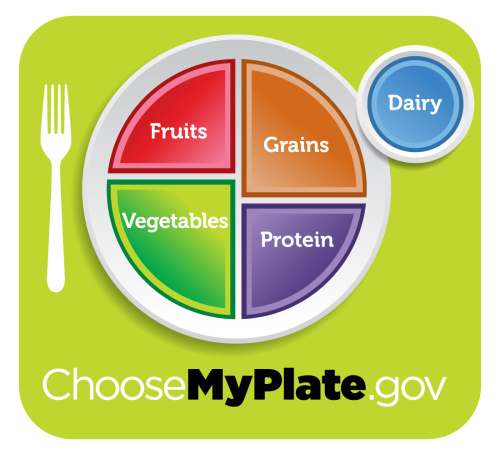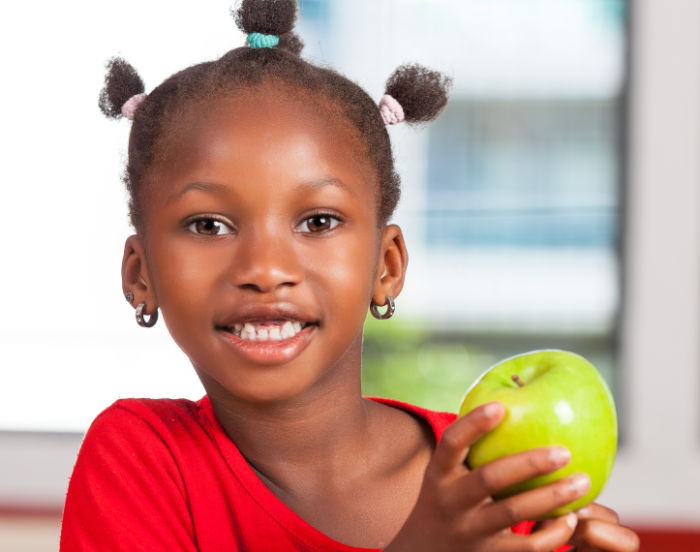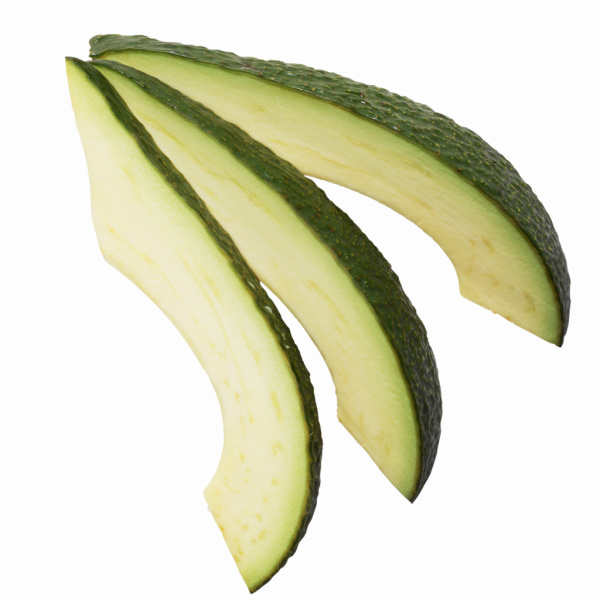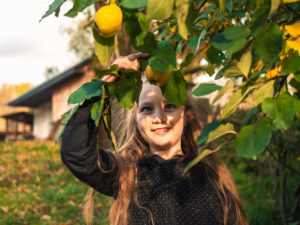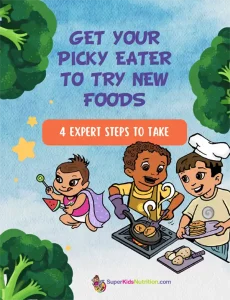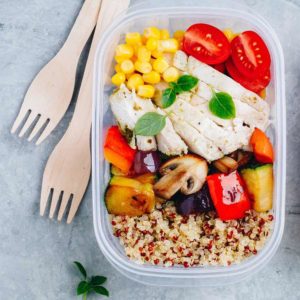
Figuring out food portion sizes for children doesn’t have to be guesswork. Use these guidelines to figure out the easy way!
Having trouble figuring out how much food you should be giving your child? Gender and age both play a role in how many servings of fruit, vegetables, protein, grains, dairy, and oils your child should have each day. Start by taking a look at the chart below based on the MyPlate recommended servings. Then browse through our meal plans by age to see how to meet these targets!
MyPlate Food Group Recommendations Per Day (1-6)
|
Gender |
Age |
Fruit |
Veg |
Protein |
Grains |
Dairy |
Oils* |
|
Girls/Boys |
2-3 year-olds |
1 cup |
1 cup |
2 oz. |
3 oz. |
2 cups |
3 tsp. |
|
Girls/Boys |
4-8 year-olds |
1-1.5 cups |
1.5 cups |
4 oz. |
5 oz. |
2.5 cups |
4 tsp. |
|
Girls |
9-13-year-olds |
1.5 cups |
2 cups |
5 oz. |
5 oz. |
3 cups |
5 tsp. |
|
Boys |
9-13-year olds |
1.5 cups |
2.5 cups |
5 oz. |
6 oz. |
3 cups |
5 tsp. |
|
Girls |
14-18-year-olds |
1.5 cups |
2.5 cups |
5 oz. |
6 oz. |
3 cups |
5 tsp. |
|
Boys |
14-18-year-olds |
2 cups |
3 cups |
6.5 oz. |
8 oz. |
3 cups |
6 tsp. |
*Oils can include nuts and seeds, see category details below.
oz. = ounce
tsp. = teaspoon
Tbsp. = tablespoon
How do these portion sizes for children fit together on a plate?
Not sure what your kid’s plate should look like? The MyPlate guidelines for a balanced plate make it a lot easier to reach food group targets each day. Not every meal will fit the exact mold, but having a guide can get you started on the right foot – especially when you’re first getting used to portion sizes for kids! If your child is tall, at the higher end of the age range, or physically active, they may need to consume more calories. Kids who are small in stature genetically, may not require as much. If you have concerns about your child’s portions and nutrition plan, work with a registered dietitian.
What does 1 cup-equivalent of fruit look like? (1)
- 1 cup of chopped fruit, fruit puree, or 100% fruit juice*
- ½ of one large apple or 1 small apple
- 1 large banana
- 32 seedless grapes
- 1 large orange
- 1 medium grapefruit
- 3 medium plums
- 8 strawberries
- ½ cup of dried fruit (raisins, mango, figs)
*Limit fruit juice to less than ½ cup for toddlers under 3, ¾ cup for ages 4-6, and under 1 cup for older children.
What does 1 cup-equivalent of vegetables look like? (2)
Generally speaking, 1 cup raw or cooked chopped vegetables, 1 cup pure vegetable juice, or 2 cups of leafy greens count as a cup-equivalent or a serving. Here are a few examples!
- Broccoli – roughly 3 large spears
- 2 cups raw spinach or other leafy greens
- 2 medium carrots (or 12 baby carrots)
- 1 large pepper
- 1 medium tomato
- 1 cup 100% vegetable juice
- ½ cup cooked squash (roughly ½ acorn squash baked)
- 1 cup corn (roughly 1 large ear)
- 1 cup cooked beans or peas
- 1 medium baked potato
What does 1 ounce-equivalent of grain look like? (3)
At least half of all grains should be 100% whole grains. What we often consider to be one serving of grain is 2 or more. Pay attention to portion sizes for children since it’s easy to overserve some of these foods.
- ½ English muffin
- 1 small (2.5” diameter muffin); 1 large = 3 oz. equivalents
- 1” mini bagel; 1 large bagel = 4 oz. equivalents
- 5 whole-wheat crackers
- ½ cup cooked oatmeal
- 1 packet instant oatmeal
- 1 slice bread
- ½ cup of cooked rice, bulgur, quinoa, pasta, etc.
- 3 cups popped popcorn (½ mini microwave bag)
- 1 corn tortilla or small flour (6”) tortilla; 1 large tortilla (12” diameter = 4 oz. equivalents)
What does a 1 ounce-equivalent of protein look like? (4)
- 1 Tablespoon of peanut, nut butter, or seed butter (these can also count for oils -see below)
- 1 egg
- 1 oz. cooked meat, fish, or poultry (1 small chicken breast, fish fillet, or steak = 3 oz.)
- ⅓ can of tuna (1 can = 3 equivalents)
- 1 sandwich slice of turkey
- 12 almonds
- 7 walnut halves
- 24 pistachios
- 2 Tbsp. hummus
- ¼ cup of beans, chickpeas, or lentils (1 cup split pea, lentil, or bean soup = 2 oz.)
What does a 1 cup equivalent of dairy look like? (5)
Typically, 1 cup of fluid milk, soy milk, or yogurt counts as a 1 cup serving. After 1 year of age, most choices should be low-fat dairy.
- 1.5 oz. of natural cheese (cheddar, mozzarella, parmesan)
- 2 oz. of processed cheese (1 slice of American = ⅓ cup milk)
- ⅓ cup shredded cheese
- 1 cup of pudding made with milk
- 1 cup yogurt (1 small container = ¾ cup)
- 2 cups of cottage cheese
- 1 cup of frozen yogurt
- 1.5 cups ice cream
What does an oil equivalent look like? (6)
Oils should be consumed in limited amounts. In addition to oils, a few higher fat foods from other food groups may count–avocados, oils, some fish, and nuts, for example.
- 1 tsp. oil (i.e., olive, canola, vegetable)
- 1/6 medium avocado
- 8 large olives
- 8 almonds
- 3-4 walnut halves
- ½ Tbsp peanut or other nut butter
- 6 cashews
- 1 Tbsp. Italian/Thousand Island dressing
Oils can be any additional fat. You may choose nuts or seeds as oil equivalents. Oils should be consumed in limited amounts. In addition to oils, some higher fat foods from other food groups may count – avocados, oils, some fish, and nuts, for example.
More Ideas for Portion Sizes for Children
Looking for ideas of how these foods can fit together into tasty meals? Check out my new breakfast cookbook for meals your kids won’t be able to turn down!
